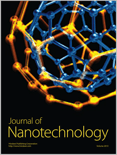
Journal of Nanotechnology
Scope & Guideline
Catalyzing Progress in the Field of Nanotechnology
Introduction
Aims and Scopes
- Nanomaterial Synthesis and Characterization:
Research on the various methods of synthesizing nanomaterials, including chemical, physical, and biological techniques, as well as comprehensive characterization of their properties. - Applications in Energy and Environment:
Studies exploring the use of nanomaterials in energy storage, conversion, and environmental remediation, addressing critical challenges in sustainability and efficiency. - Biomedical Applications:
Investigations into the use of nanotechnology in drug delivery systems, medical imaging, and therapeutic applications, focusing on enhancing the efficacy and safety of medical treatments. - Nanotechnology in Material Science:
Research on the development of new materials with enhanced properties through nanostructuring, including composites, coatings, and functional materials. - Computational and Theoretical Studies:
Utilization of computational methods to model nanomaterial behavior and predict their properties, facilitating the design of new nanomaterials for specific applications.
Trending and Emerging
- Nanotechnology in Healthcare Innovations:
There is a rising trend in research focused on the application of nanotechnology in healthcare, including targeted drug delivery, personalized medicine, and advanced diagnostic techniques. - Sustainable Nanomaterials:
Emerging studies emphasize the development of environmentally friendly and sustainable nanomaterials, addressing global challenges such as pollution and resource depletion. - Quantum Dots and Nanophotonics:
Research involving quantum dots and their applications in photonics and optoelectronics is gaining popularity, driven by advancements in nanofabrication techniques. - Smart Nanomaterials for IoT Applications:
The integration of nanotechnology with the Internet of Things (IoT) is becoming increasingly prominent, focusing on the development of smart, responsive materials for various applications. - Nanotechnology for Energy Harvesting and Storage:
Research on nanotechnology applications in energy harvesting and storage, particularly in the development of efficient batteries and supercapacitors, is on the rise.
Declining or Waning
- Traditional Nanocomposites:
Research focused on conventional nanocomposite materials has seen a decrease as newer, more innovative materials and methods gain traction in the field. - Basic Nanoparticle Toxicology Studies:
While initial studies on the toxicity of nanoparticles were prevalent, recent research has shifted towards more applied and translational studies, leading to a decline in purely toxicological investigations. - Single-Function Nanomaterials:
Interest in nanomaterials designed for single applications is waning as there is a growing emphasis on multifunctional materials that can address multiple challenges concurrently. - Nanotechnology in Agriculture:
Research specifically focused on agricultural applications of nanotechnology appears to be decreasing, possibly due to a shift towards more integrated approaches that combine various technologies for sustainability.
Similar Journals

Journal of Nano Research
Transforming Ideas into Nano InnovationsThe Journal of Nano Research, published by Trans Tech Publications Ltd, is a distinguished academic journal dedicated to the rapidly evolving field of nanotechnology and materials science. With an ISSN of 1662-5250 and an E-ISSN of 1661-9897, the journal has been an important platform for researchers and professionals since its inception in 2008, continuing to provide high-quality peer-reviewed research through to 2024. Nestled in Switzerland, the Journal of Nano Research plays a pivotal role in disseminating cutting-edge findings, as recognized by its categorization in Q3 for Materials Science and Physics while being positioned in Q4 for Nanoscience and Nanotechnology as of 2023. With Scopus rankings highlighting its impact, including Rank #129 in general Physics and Astronomy and Rank #300 in Materials Science, this journal is crucial for academics seeking to stay ahead in research trends and innovations in nano-related disciplines. Although it operates under a subscription model, the journal's objectives include fostering collaboration and knowledge-sharing among researchers, making it an invaluable resource for anyone immersed in the world of nanotechnology.

Frontiers of Materials Science
Bridging Academia and Industry through Materials InnovationFrontiers of Materials Science is a groundbreaking journal dedicated to exploring advanced materials and their applications within the ever-evolving landscape of materials science. Published by HIGHER EDUCATION PRESS, this journal offers a crucial platform for scholars and practitioners seeking to disseminate innovative research findings that foster interdisciplinary collaboration. Since its inception in 2011, the journal has enjoyed a notable Q2 ranking in the category of Materials Science (miscellaneous) as of 2023, positioning it among the noteworthy publications in the field with a Scopus rank of #222 out of 463. While predominantly published in China, the journal is committed to open access principles, allowing global accessibility to cutting-edge research. With its comprehensive coverage spanning materials synthesis, characterization, properties, and applications, Frontiers of Materials Science not only serves as a repository for academia but also bridges the gap between research and industry, making it an indispensable resource for researchers, professionals, and students alike.

MRS Advances
Charting New Territories in Physics and EngineeringMRS Advances, published by Springer Heidelberg, is an esteemed academic journal that serves as a vital platform for disseminating cutting-edge research in the fields of condensed matter physics, materials science, and mechanical engineering. With an ISSN of 2731-5894 and an E-ISSN of 2059-8521, the journal is hosted in Switzerland and encompasses an impressive spectrum of innovative studies that impact both theoretical and practical applications. Throughout its converged years from 2012 and continuing through 2024, MRS Advances has established itself with notable rankings, including Q4 in condensed matter physics and Q3 in several related categories. This journal not only enriches the academic community with its rigorous peer-reviewed articles, but also encourages open discussions that further advance research innovations. Although currently not designated as an open-access journal, its accessibility through institutional subscriptions ensures that professionals, researchers, and students can engage with the latest advancements in the material science arena. Emphasizing its relevance, MRS Advances is dedicated to fostering interdisciplinary collaboration and inspiring new discoveries within the global research community.
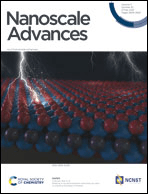
Nanoscale Advances
Connecting Research and Innovation at the Nanoscale.Nanoscale Advances, published by the Royal Society of Chemistry, stands out as a leading open-access journal dedicated to advancing the field of nanoscience and nanotechnology since its inception in 2018. With a specialized focus on areas such as atomic and molecular physics, bioengineering, chemistry, and materials science, this journal has consistently achieved top-tier rankings across several categories, reflecting its high-impact contribution to research and innovation. Currently classified in the Q1 quartile for both Atomic and Molecular Physics and Chemistry (Miscellaneous), and Q2 for Bioengineering, its prestige is underscored by impressive Scopus rankings, including a notable 34th position in General Engineering. With its commitment to disseminating high-quality research, Nanoscale Advances serves as an invaluable resource for researchers, professionals, and students alike, fostering collaboration and scholarly exchange in the rapidly evolving landscape of nanotechnology.

FULLERENES NANOTUBES AND CARBON NANOSTRUCTURES
Advancing Nanotechnology Through Carbon InnovationFULLERENES NANOTUBES AND CARBON NANOSTRUCTURES, published by Taylor & Francis Inc, stands at the forefront of research in the fields of nanotechnology, materials science, and organic chemistry. With an ISSN of 1536-383X and an E-ISSN of 1536-4046, this journal offers a critical platform for disseminating significant findings related to carbon-based nanostructures, materials characterization, and their innovative applications. Recognized for its scholarly impact, the journal enjoys a Q2 ranking in several fields, including Atomic and Molecular Physics, Materials Science, and Organic Chemistry, reflecting its commitment to quality research. Since its inception in 2002, it has maintained a rigorous publication standard and provides open access options, enabling a diverse audience, from researchers to industry professionals, to engage with the latest advancements. The journal's comprehensive scope across converged years until 2024 emphasizes its pivotal role in fostering knowledge in the rapidly evolving realm of nanoscience and nanotechnology. Researchers and practitioners alike are encouraged to explore the cutting-edge research showcased in this vital resource.
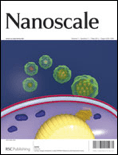
Nanoscale
Pioneering Discoveries in Materials Science.Nanoscale is a premier academic journal published by the Royal Society of Chemistry, dedicated to advancing the field of nanoscience and nanotechnology. With both its ISSN (2040-3364) and E-ISSN (2040-3372) ensuring wide accessibility, the journal is renowned for its high-impact research contributions, reflected in its impressive 2023 Impact Factor and prestigious Q1 ranking in both Materials Science (Miscellaneous) and Nanoscience and Nanotechnology categories. Since its inception in 2009, Nanoscale has fostered a collaborative platform where leading researchers from around the globe share their innovative findings across a multitude of topics spanning from material synthesis to applications in nanotechnology. The journal not only serves as a valuable resource for professionals, researchers, and students but also actively engages the academic community in discussing emerging trends, thus shaping the future of nanoscience. Situated in the heart of the UK at Thomas Graham House, Science Park, Milton Rd, Cambridge CB4 0WF, Nanoscale remains a key publication for those looking to keep abreast of the latest breakthroughs in an ever-evolving field.

BULLETIN OF MATERIALS SCIENCE
Connecting Researchers to the Pulse of Materials ScienceBulletin of Materials Science, published by the Indian Academy of Sciences, is a distinguished journal that has been contributing to the field of materials science since its inception in 1979. With an ISSN of 0250-4707 and E-ISSN 0973-7669, it provides a platform for researchers to share groundbreaking studies and advancements in the mechanics of materials and general materials science. As of 2023, the journal holds a respectable Q3 ranking in both the Materials Science (miscellaneous) and Mechanics of Materials categories, highlighting its competitive position in the academic landscape. Although the journal currently does not operate under an open access model, it remains a vital resource for professionals and students keen on exploring innovative material developments and methodologies. With a commitment to promoting high-quality research, the Bulletin of Materials Science features rigorous peer-review processes, making it an essential reference for anyone engaged in the materials science domain.
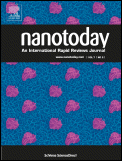
Nano Today
Unveiling the future of science at the nanoscale.Nano Today is a prestigious journal published by ELSEVIER SCI LTD that stands at the forefront of nanoscience and nanotechnology research. With an impact factor that underscores its significance, this journal has achieved remarkable rankings in several key categories as of 2023, including Q1 positions in Bioengineering, Biomedical Engineering, Biotechnology, Materials Science, and Pharmaceutical Science, making it an essential resource for scholars and professionals alike. ISSN 1748-0132 and E-ISSN 1878-044X, the journal serves as a vital platform for disseminating cutting-edge research findings and innovative applications in the field. Although open access options are not available, the journal's rich repository of peer-reviewed articles provides invaluable insights into the latest advancements in nanotechnologies. Based in the Netherlands, Nano Today not only connects a global network of researchers but also propels forward the conversation on the transformative potential of nanomaterials across multiple disciplines. With a commitment to advancing knowledge and fostering innovation, Nano Today is an indispensable tool for academics and practitioners dedicated to pushing the boundaries of scientific exploration.
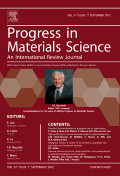
PROGRESS IN MATERIALS SCIENCE
Empowering Research in the World of MaterialsPROGRESS IN MATERIALS SCIENCE is an esteemed peer-reviewed journal published by Pergamon-Elsevier Science Ltd, focusing on pioneering advancements and comprehensive studies in the field of Materials Science. With an ISSN of 0079-6425 and an E-ISSN of 1873-2208, this journal boasts a prestigious status, ranking in the Q1 category for Materials Science (miscellaneous) and achieving a remarkable 99th percentile in Scopus rankings, positioned 4th out of 463 journals in General Materials Science. Published from the United Kingdom, PROGRESS IN MATERIALS SCIENCE provides critical insights into the latest discoveries, trends, and methodologies shaping the materials science landscape, making it an invaluable resource for researchers, professionals, and students alike. Readers can explore rich content on subjects ranging from nanomaterials to biomaterials and beyond, all designed to foster innovation and knowledge dissemination in the materials science community. Although it is not an open-access journal, it remains a pivotal platform for high-quality research and essential discourse in this dynamic field.
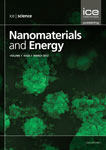
Nanomaterials and Energy
Advancing nanotechnology for a sustainable energy future.Nanomaterials and Energy is a pioneering, peer-reviewed journal dedicated to advancing the field of nanotechnology and energy applications. Published by EMERALD GROUP PUBLISHING LTD from the UK, this journal serves as a vital resource for researchers, professionals, and students involved in energy innovation and materials science. With an ISSN of 2045-9831 and an E-ISSN of 2045-984X, it is indexed within Scopus and has witnessed its ranking currently placed in the Q4 category for both Energy (miscellaneous) and Materials Science (miscellaneous) for 2023, demonstrating its emerging role in these significant fields. Nanomaterials and Energy aims to explore the convergence of nanomaterials with energy systems, fostering interdisciplinary collaboration and promoting novel technologies that can address contemporary energy challenges. While not an open-access journal, it is acknowledged for its rigorous contributions to scientific knowledge, making it an essential publication for those at the forefront of energy and materials research. The journal’s accessible format and comprehensive editorial policy ensure it remains an influential platform through 2024 and beyond.